Planner: Cui Guo Author: Carmo Cardoso
The role of urban public space in creating community has been one of the most widely studied subjects in urban planning and architecture. However, the relationship between urban space and community seems to have encountered a turning point. Before, the public urban space was planned to foster a sense community amongst its inhabitants, whereas now there seems to be a growing tendency for it to serve the "offline" encounters of already existing online communities. Before tackling this issue, it is fundamental to understand how to define community in the most traditional sense.
Defining Community
The definition of community is still a debate amongst architects and planners. The definitions range from people who are sharing the same space, to people who are bound by shared interests and values. From a pragmatic point of view, sharing the same space would be a weak definition for community. For example, if a group of people work in the same office building, but there are never meaningful interactions between them, they can not be considered a community. Building community implies a higher level of interpersonal interaction and having a common interest on sight. In companies such as wework, there are job titles like "community managers" whose part of the daily tasks is to organize events that will give opportunities for people to meet and interact within the same company. So not only do big companies recognize the building community is not simply sharing the same space, but also that having a sense of community is beneficial.

Picture Source: WeWork
The Importance of Community
Jane Jacobs, the author of The Death and Life of Great American Cities, popularized the idea that building community is crucial for having healthy neighborhoods and cities. She argues that neighborhoods with a stronger sense of identity and where people know each other well will tend to be more orderly and safer. This is a strong enough reason as to why, for years, urban planners and architects dedicated so much time trying to find out how to induce this feeling of community when planning a new neighborhood or designing public space.
Finding out the factors behind what makes a good neighborhood is by definition a hard and subjective task. First of all, defining what is a successful community is a highly qualitative task, although some quantitative factors such as low crime rates can be taken into account. Secondly, figuring which aspects contributed to that sense of community is a highly subjective task, that needs to take in factors from several scientific fields. Lastly, pinning down the relationship between these factors and the sense of community, for the most part, relies on interviewing and observing the behaviors of people, which in itself carries a certain amount of unreliability.
In the West, one of the most undeniable factors that appeal to a sense of community in neighborhoods is children and schools. There are policies that incentive each neighborhood to have a school at a walking distance. This is a great incentive for the residents (mainly the parents) make the surroundings safe for their children. To achieve that, people in the neighborhood need to know each other and coordinate their daily activities with the common goal that is the well being of their children. However, this is only applicable when schools’ ratings are the same or irrelevant in an overall academic path. When this is not the case parents might be willing to send their kids to a faraway school because it holds a better reputation. That said, architects and planners need to provide alternative ways to find this sense of community and shared value.
Some studies indicate that the sense of community around the same geographical area comes from having a safe open public space in a 5-minute walking distance. This is especially the case for parks that are versatile enough to accommodate for different types of activities. Versatility is the keyword when designing open public spaces, particularly in the case of future communities, as it will be explained ahead.
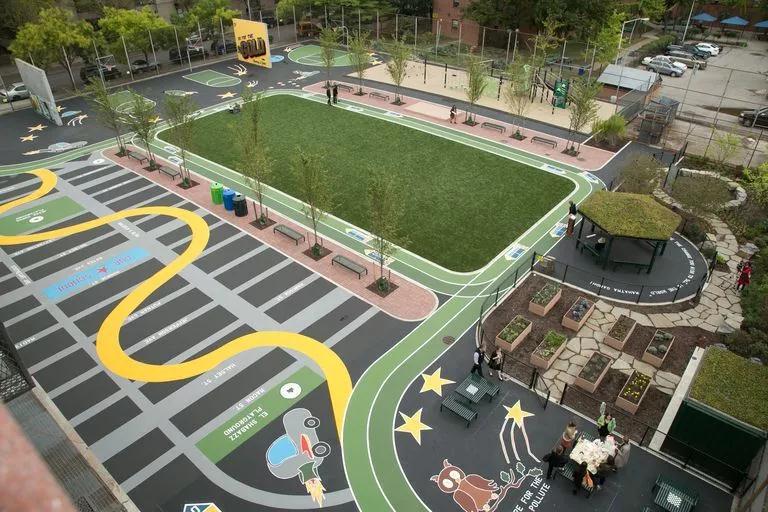
Picture Source: TPL
The needs of Community
Other studies also suggest that this sense of community can only come to residents when certain necessities are met. To explain this idea there is a good analogy with Maslow's Hierarchy of Needs (figure 1). Abraham Maslow proposed a psychological theory that an individual can only reach self-actualization once other base necessities are met. These needs are represented in a pyramid where the bottom ones always need to be fulfilled before reaching the upper ones. At the base of the pyramid, we have the physiological needs, going upwards safety, social, esteem and finally self-actualization. From here we can expand a logic that is applied to the individual to the mass and make an analogy with the conditions that need to be met before creating a healthy sense of community. Starting with physiological needs, Maslow proposes that the most basic human needs such as food and sleep are at the base. Analogously, we can say that the basic infrastructure in a city or neighborhood needs to be at the base of the pyramid. If there is no easy access to food, basic sanitation the odds are even if there is some sort of community it will not be an ideal one. Going upwards, in Maslow's hierarchy, there is safety which can be directly associated with a city's or area sense of safety. This sense comes from good traffic control, high walkability score and a constant flow of people. It is to note that safety is a complex issue since there needs to be a basic sense of safety in a neighborhood, that will be improved once a community is built. The equivalent to social needs at the individual level expanded to the social level can be translated into the availability of high quality passive public spaces and spaces associated with social activities. Once these conditions are met there is room for a healthy neighborhood identity. This sense of identity is crucial when forming a community, that would stay at the top of the pyramid of urban social needs. Nevertheless, it is not clear to planners what is the formula that allows building a community around public spaces, and it is a topic that needs further studying.
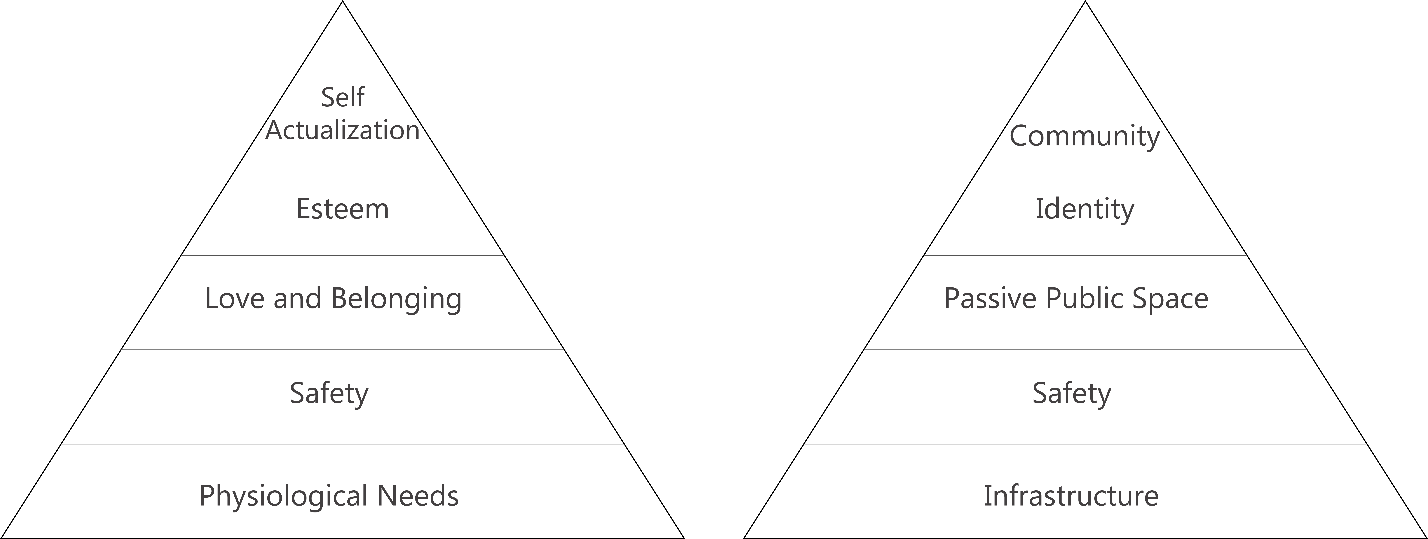
Comparison between the Maslow Hierarchy of needs and the Community hierarchy of needs
As a side note, there are many neighborhoods which do not meet these conditions and have a strong sense of community, for example, some neighborhoods in the Brazilian favela. However, these communities are driven by social values that revolve around that exactly lack and tend to engage in criminal activities.
The map is not the territory
"The map is not the territory" is a phrase coined by Alfred Korzybski that describes the cognitive limitations of humans when understanding reality. In this phrase, "the map" represents the simplifications humans need to do in order to make the overwhelming data legible. Extending this premise from the individual level to governing entities, as described in the book Seeing Like a State, these entities tend to make their perception of the overall population legible to themselves, again due to their own human limitations. Unfortunately, a lot of decisions take these simplifications into account, which is not beneficial to the population. This phenomenon represents partially the issue when studying and designing urban space. The question remains, how to account for all the data that otherwise would be overwhelming for people to analyze? The answer is Artificial Intelligence.
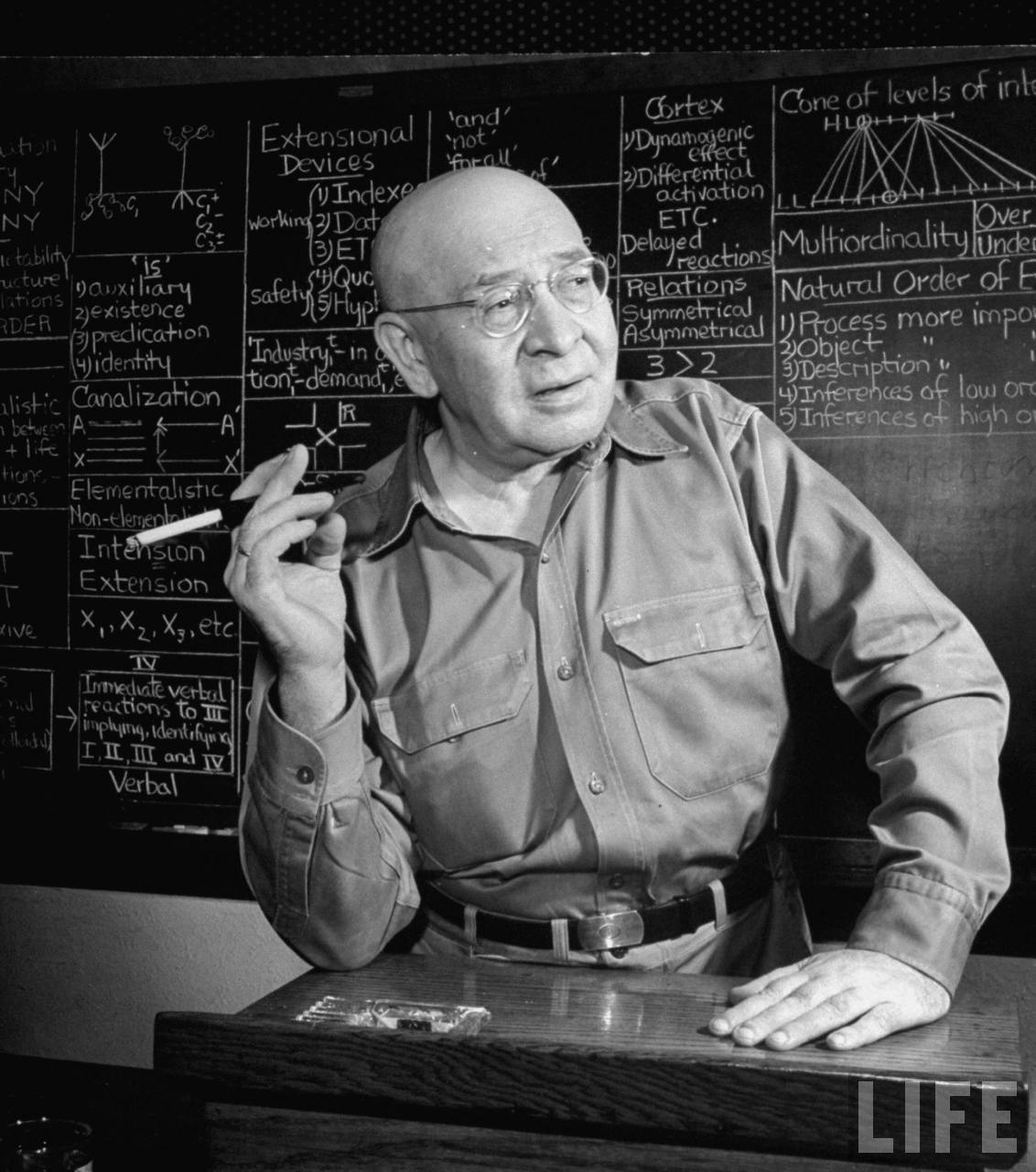
Alfred Korzybski (Picture Source: philosophyforchange.wordpress.com)

Seeing Like a State (Picture Source: Douban)
With the rise of Artificial Intelligence as a tool in a large number of professional areas, the way we look at data and act upon it has changed dramatically. Using the data from urban spaces and analyzing it through Artificial Intelligence algorithms can help building tools that will drive urban planners' designs to perform better. The greatest challenge, once again, is understanding how to decompose the factors that influence how community is built. Given the qualitative nature of a lot of these factors, this will always be a challenging task. The AI use in urban planning can be decomposed into two major parts, one that concerns the physical world and another that analysis people's data.
One of the ways of analyzing the physical urban space is through Space Syntax. Roughly speaking, the urban space can be decomposed into the shapes that are the negative of the urban masses. Space Syntax mathematically quantifies these shapes and tries to predict human behavior and interactions based on these results. Once again, the issue with this process is that the relationship between the space parameters and behaviors is a "map" and not the "territory". The usage of AI methods will allow to urban planners to produce more accurate models of how the Space Syntax affects the sense of community since the AI algorithms can process a lot of data and make rationalizations that are beyond human ability.

Picture Source: ASRI
By analyzing data coming from devices such as smartphones, the information of how people move around and feel about neighborhoods can integrate the study of the urban space. For example, the information people post on social networks about a certain place can be very eye-opening about urban space. The role of new technologies does not confine itself exclusively to finding new ways to incentive the built of communities in certain geographical areas, but they are also responsible to create communities of people that have never seem each other before. On that regard that are two main technological advances that will impact the urban space and social dynamics, the internet and augment reality.
The community comes before the space
The invention and spread of the internet is one of the most significant technological advances for the human species. From a social standpoint, it allows for instant communication between people not sharing the same physical space. Both people that met in person or online. This feature of the internet is what created a big opportunity for people to create their communities based on common interests. A lot of these communities restrain themselves to the online world, but some of them organize meetings in the physical world. One particular case evolved from regular events into a permanent settlement of the community in a specific urban area.
Founded in 2009, LessWrong started as an online community dedicated to decision theory. This community has thousands of members and they are mostly located in North America and Europe (figure 2). Centered around Eliezer Yudkowsky, the community was connected to non-profit organizations focused on Artificial Intelligence Safety and existential risk management, mostly based in the San Francisco Bay Area. Meetups in the offline world were originally mainly in New York and spread to other cities around the world.
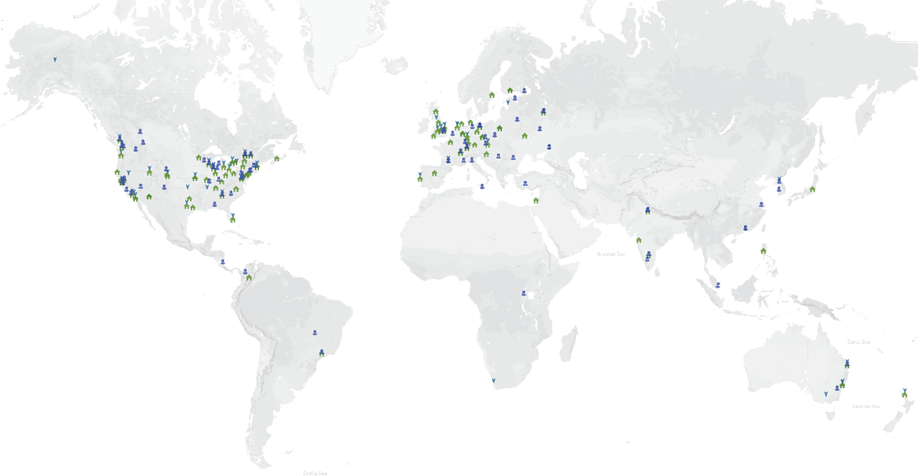
Less wrong community showing groups (in green) and individuals and events (blue) (Picture Source: https://www.lesswrong.com/community)
Later, in 2015 the online activity on LessWrong dwindled and the community fragmented to other related websites. In 2017 the original LessWrong website was retooled under a new community administration to provide a hub to the online rationalist diaspora. This process accelerated the involvement of LessWrong members with the mentioned above projects.
Given that some of these projects were located in the San Francisco Bay Area, there was a relocation of the community members to that area. To deal with the high living costs this group implemented collective housing solutions. This evolved into attempts to acquire contiguous real estate and create a service network for community members such as daycares. At this point, the community has become a stakeholder in local politics. They are homeowners with agendas and shared common values.
This is the inverse process of creating a traditional community, where the physical proximity comes first and the sense of community develops from there. In this process, the community exists before the neighborhood. In this case, finding a space to co-inhabit is already part of the pre-existing sense of community. In the same way that an online community could commit to finding a space to co-inhabit, this community may also have a higher commitment to the prosperity of the space and their fellow community members. Having a neighborhood with a strong sense of community can result in a safer and more active environment, which will attract not only more residents but passersby too. If so happens, that area will have more potential for economic development in the area
From the city’s point of view, this is a highly profitable situation, since if a neighborhood is self-organized, it alleviates the burden of keeping it safe and finding out activities for economical stimulation. There is a lot of room for speculation, namely in what comes to urban policies. For example, as urban renewal becomes a growing need in big cities, there is an opportunity to make these communities the main target to inhabit the “dead” parts of the urban fabric and turn them around. On the downside, these circumstances create a risk of conflicts between the unified newcomers and the pre-existing populations. This is an issue that must be considered and requires attention and good planning.
The Territory becomes the Map
Augmented reality is the layering of virtual content in the real world. The virtual content needs to be displayed on a device that can either be a smartphone or virtual reality goggles. There are several formats augmented reality can take, it can be purely informative, or it can be a game takes support from an existing reality. A good example of this is Pokemon Go. Pokemon Go is a phone app that takes in GPS coordinates and places "pocket monsters" in different locations that the user is trying to collect. Not all of the Pokemon have the same value, so it is to be expected that in an area with a rare Pokemon has higher affluence of players. The game popularity, especially in Japan, has impacted the daily urban life in almost comical proportions.
Pokemon Go also generated a whole new tourist movement where some commercial establishments will pay to have rarer Pokemon located inside them. Another feature of this game is the Pokemon gyms. These gyms have a fixed location, usually in the city's landmarks or notable public places. The way it works is whoever beats the gym leader becomes the new gym leader. Once again, this moves people sharing a common interest to the same place and gives room for interaction between individuals that otherwise would not meet. Pokemon Go was the perhaps the biggest recent breakthrough in what comes to the interaction between the city and an augmented reality-based community. There is no denying it is a simple idea, placing virtual creatures in city spots and collecting them.
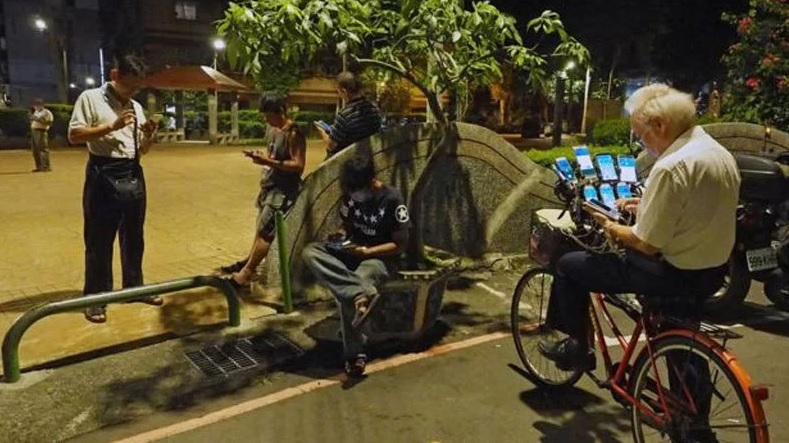
Picture Source: BBC
The next question is what happens when augmented reality increases in complexity and interpersonal interaction and how can the public space accommodate for it. The room to design augmented reality is illimited which means in the future there can be a large number of augmented realities layered in one single space. A lot of these augmented realities can be games that will attract the players to these places and generate different kinds of interactions.
The popularity of augmented reality games can bring an overwhelming amount of people to a certain public area. If augmented reality games become a significant part of our cities, the future urban space needs to be designed in a way that it can accommodate a larger amplitude of user numbers. In this scenario, the new urban space needs to deal with the possibility of a big mass of users and still be comfortable and usable when this number drops down to the local users.
The existence of augmented realities in urban space appeals to a design with a high degree of spatial complexity, not only in a 2D basis but also in the 3D world. This spatial complexity should result in elements of surprise within the space and perhaps even a space that is not easy to read. At the same time, it should conserve some versatility, so it can provide the best experience to a larger amount of augmented realities. Nevertheless, the raw physical space needs to keep a dual character so it can fulfill its functions in the overall urban tissue and serve its local community, and the augmented reality communities.
The different moving patterns and rhythms of these two different communities will be a key aspect of new urban design. Traditional use of public space already encompasses both stationary and mobile activities. The urban space provides visual cues to provide smooth spatial coordination between strangers without the need for explicit negotiation of things like right of way. People can predict each other's movements and preempt conflict. When speaking of augmented reality these those visual cues are only available to participants, making them unpredictable to other users of the physical space. Therefore, a well-integrated design would provide visually salient markers that could make the contextual bridge between the alternative reality participants and non-participants.
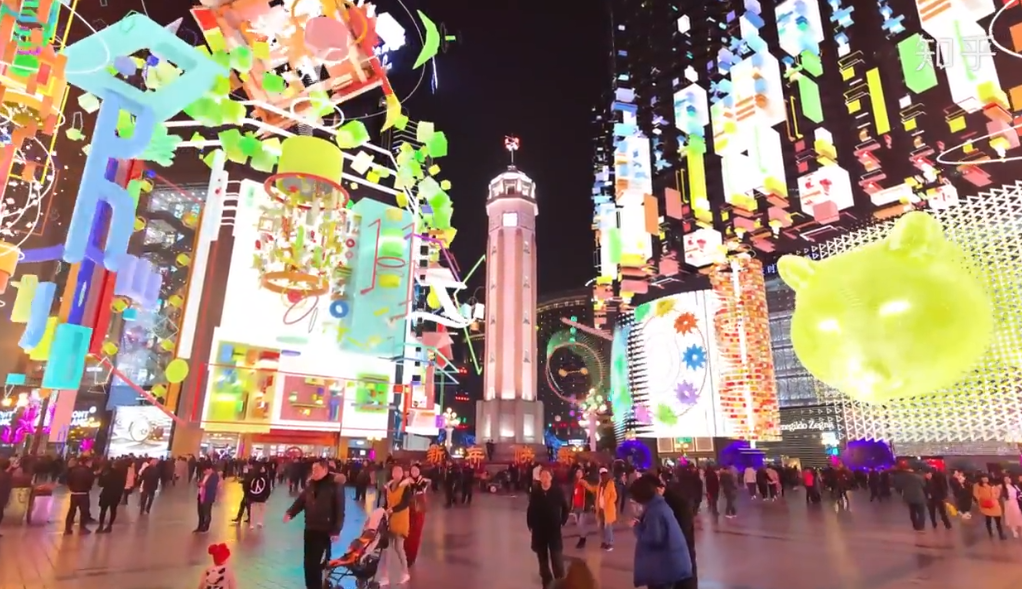
Renovation project in Chongqing (Video Source: zhuanlan.zhihu.com/p/69473574)
The potential coordination issues between traditional use and augmented reality go beyond issues of spatial design and cognitive load. For the moment, augmented reality in the urban space is an unregulated market. However, as its popularity increases it will inevitably need to be regulated. There are already some punctual situations in the current augmented reality games landscape that strongly emphasized the necessity of a legal framework to adjudicate the conflicts between the local users of the physical place and visitors engaged by the superimposed alternative reality in that physical space.
The stakeholders in the distribution of usage rights are the local governments, residents, and businesses and AR services providers. Alternate realities ability to move large amounts of people entails an obvious benefit for local commerce. However, this same ability can disrupt the life of residents that have noncommercial activities. This creates both a financial interest to cooperate with the augmented reality industry while simultaneously showing a need for an opt-out mechanism. However, to properly account for all the interests a more nuanced system would be beneficial. It is not financially feasible to place the "burden of consent" upon the AR services. There will probably be a niche for AR usage rights. Local governments with the help of third-party intermediary would establish usage licenses for specific times, places and expected participation levels to be sold to AR companies.
The Existentialism of the Urban Space
Before the development of new technologies, the urban space was conceived with a pre-defined meaning to its existence – creating community. Now, the different urban spaces need to find their own meanings in relation to the new technological landscape. New technologies will impact current communities on two different fronts. The first one is concerning the development of strategies to foster a sense of community in pre-existing and new neighborhoods. The current design methods will most likely be informed by AI algorithms developed by studying existing communities. This will potentially increase the urban design quality, but it might alienate designers since the A.I. reasoning is impossible to follow in some cases.
The other front is the communities born in the online world. These communities can be divided into two types, communities that will relocate to live in the same area and communities that meet for occasional events. Both represent a potential conflict with the local communities in different ways. For that reason, it is important to ensure the peaceful integration of the newcomer into the wider urban landscape.

Urban China is cooperated and participated by the Ministry of Construction, Tongji University, Qinghua University, Beijing University, Zhongshan University, Guangzhou Academy of Fine Arts, Chongqing University, etc. We illustrate urban development from political, economic, social and humane perspectives. Our team is mastered by experts from architecture design and urban planning, and our contents are edited by experienced senior editors with sensitivity to urban development. Our headquarter locates in Shanghai and we use synchronous and co-ordinated editing methods in Shanghai, Guangzhou, Beijing and Chongqing.
Registration information